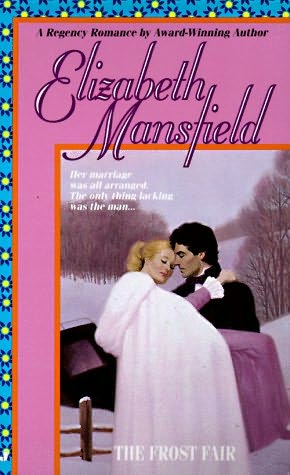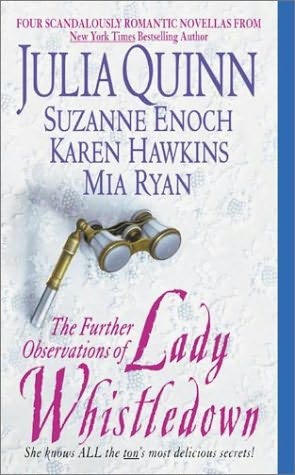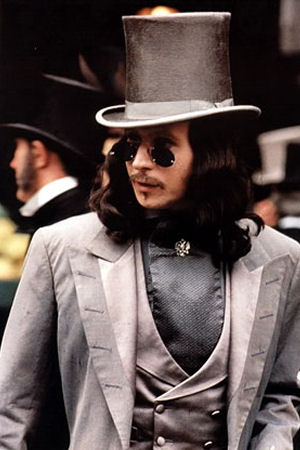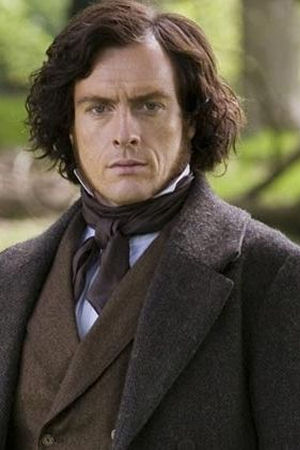Untitled
THE FROST FAIR – LA FIERA DEL GELO
While reading Jo Ann Ferguson’s “Christmas bride”, at page 134 I found mentioned a London Frost Fair, with its “colorful pavillions on the Thames”.
On the Thames? Not along the Thames?
This suddenly reminded me the scene in Mary Balogh’s “Christmas beau”, when the h/h couple go and see a furtuneteller whose stall is located on the frozen river as well. So, I started looking around to understand what exactly Frost Fairs were – and this is what I digged out. Enjoy!
Mentre leggevo “Christmas Bride” di Jo Ann Ferguson, a pag. 134 ho visto citata una non meglio precisata “Frost fair”, cioè una “Fiera del Gelo” a Londra, ed i suoi “padiglioni colorati sul Tamigi”.
Sul Tamigi? E non lungo il Tamigi?
Mi sono ricordata improvvisamente della scena in “Dolce vendetta” (“Christmas beau” ) di Mary Balogh, dove i due protagonisti si fanno predire il futuro da una cartomante che ha il suo chiosco sul fiume gelato. Quindi, ho inziato a cercare qua e là per capire cosa fosse esattamente questa Fiera del Gelo – e questo è quanto ho trovato. Buona lettura!

London Frost Fair 1684
In periods when the British climate was more severe than it is now, it was not uncommon for the River Thames to freeze over. One of the earliest recorded occasions was in AD 250 when the river remained under ice for nine weeks. During the 'Little Ice Age', which is usually dated around 1500 - 1850, the whole of Northern Europe experienced markedly cooler conditions and as a result the river froze more frequently.
The process required a long spell of cold, dry weather. Ice patches would initially form near banks and bridges, and grow until they formed solid areas of ice. These would eventually meet up until the river surface was frozen. When the ice was perceived to be thick enough, people would venture onto the ice to hold frost fairs - carnivals on ice that involved dancing, winter games and, most importantly, drinking. It was not uncommon for the freeze to last over three months, as in the case of the winters of 1683 - 1684 and 1715 - 1716.
However, the colder climate wasn't the only condition which allowed the major river to freeze over: the Thames was broader and shallower then, as it was yet to be embanked, which meant that it flowed more slowly. Also old London Bridge was supported on many closely spaced piers, which acted something like a dam.
Between 1400 and the nineteenth century there were a total of 23 documented winters in which the Thames froze over at London: 1408, 1435, 1506, 1514, 1537, 1565, 1595, 1608, 1621, 1635, 1649, 1655, 1663, 1666, 1677, 1684, 1695, 1709, 1716, 1740, 1776, 1795 and 1814.
Frost fairs could never be predicted, but when they did happen they were amazing spectacles and people took full advantage of the ice by setting up stalls and sideshows on it. There were fairground attractions, merry-go-rounds, swings, puppet shows, skittles, football and bowls. Donkey, horse and wagon racing events also took place.
Henry VIII is said to have travelled all the way from central London to Greenwich by sleigh along the river during the winter of 1536 - 1537, and Elizabeth I took walks on the ice during the winter of 1564 - 1565.
In 1683 - 1684 the fair lasted from December to early February and was huge, creating a mini-London on the ice. Whole streets of booths were constructed across the river between Southwark and Temple: Londoners could pass their time drinking watching bear- or bull-baiting, wrestling and horseracing on the ice. Charles II visited, accompanied by his court, and the printed souvenir created for him can be seen at the Museum of London.
But the Frost Fair’s weren’t all fun – many Londoners fell over and broke their limbs or fell through the ice and drowned. The ice was also a disaster for the port, as ships could not enter the Upper Pool. Those whose livelihoods depended on the port found themselves out of work. As trade ground to a halt, coal and many other goods became scarce. In 1739-40 the Lord Mayor was forced to launch an appeal to help those affected by the big freeze.
1814 fair, which is the best known and biggest of all London's frost fairs, was also to prove to be last one. A new London Bridge was built in 1823 slightly upstream from the old bridge which was eventually demolished in 1831. The structure of the new bridge was less bulky then its predecessor: this, together with the narrowing of the river through the creation of the embankments on either side, resulted in a permanent change of the flow of the river, which is now too fast-flowing to freeze over.
The Thames has turned to ice in stretches since the last time in 1962. But the days when Henry VIII could travel by sleigh on the river are lost for ever … or at least until the next little ice age.

The Frozen Thames - 1677
Nei tempi in cui il clima dell’Inghilterra era più rigido di quanto sia oggi, non era insolito che il fiume Tamigi gelasse. Una delle prime volte in cui questo successe, secondo le testimonianze, fu nel 250 d. C, quando il fiume rimase coperto di ghiaccio per nove settimane. Nel corso della cosiddetta“Piccola Era Glaciale”, che durò all’incirca dal 1500 al 1850, in tutto il Nord le temperature erano nettamente più rigide di quelle a cui siamo abituati oggi e di conseguenza il fiume gelò spesso.
Perchè questo avvenisse bisognava che ci fosse un lungo periodo di tempo freddo e asciutto. I blocchi di ghiaccio iniziavano a formarsi in prossimità di ponti e banchine, e crescevano di dimensione fino a formare solide lastre ghiacciate. Man mano le lastre si congiungevano tra di loro finchè la superficie intera del fiume congelava. Quando il ghiaccio veniva giudicato spesso a sufficienza, la gente vi organizzava sopra la Fiera del Gelo – una specie di carnevale sul ghiaccio, dove si ballava, si tenevano giochi invernali e soprattutto si beveva. Non era insolito che questo periodo di gelo durasse tre mesi e anche più, come nel caso degli inverni del 1683 - 1684 e del 1715 - 1716.
Comunque, il clima più freddo non era l’unica condizione che faceva sì che il fiume riuscisse a gelare: il Tamigi a quei tempi era più largo e meno profondo, perché non erano ancora state costruite le alzaie sui due lati, e quindi scorreva più lentamente. Anche il vecchio ponte di Londra era sorretto da molti piloni, e aveva un po’ l’effetto di una diga.
Tra il 1400 e il 1800 sono stati documentati 23 inverni in cui il Tamigi gelò completamente a Londra: 1408, 1435, 1506, 1514, 1537, 1565, 1595, 1608, 1621, 1635, 1649, 1655, 1663, 1666, 1677, 1684, 1695, 1709, 1716, 1740, 1776, 1795 e 1814.
Le Fiere del Gelo non potevano mai essere previste in anticipo, ma quando avevano luogo erano spettacoli incredibili, e la gente sfruttava il ghiaccio per installarci sopra chioschi e tendoni. C’erano attrazioni da luna park, giostre, altalene, spettacoli di marionette, campi per giocare ai birilli, al pallone e a bocce. Venivano anche organizzate corse di asini, di cavalli e di carri.
Si dice che Enrico VIII nell’inverno del 1536 - 1537 abbia percorso in slitta sul fiume l’intero tragitto dal centro di Londra fino a Greenwich, e che Elisabetta I abbia passeggiato sul ghiaccio nell’inverno del 1564 – 1565.
In 1683 – 1684 la fiera durò da dicembre fino agli inizi di febbraio, e fu qualcosa di gigantesco, al punto da creare una vera e propria Londra sul ghiaccio. Tra Southwark e Temple vennero costruite file e file di chioschi: i Londinesi potevano passare il tempo bevendo oppure assistendo a combattimenti di orsi e di tori, a spettacoli di lotta e a corse di cavalli sul ghiaccio. Carlo II visitò la fiera insieme alla sua corte, e al Museo di Londra si posso vedere le stampe commemorative dell’avvenimento.
Ma le Fiere del gelo non erano soltanto divertimento – molti Londinesi scivolavano e si procuravano fratture, oppure affogavano quando il ghiaccio si rompeva. Il ghiaccio era disastroso anche per l’attività del porto, perché bloccava l’accesso delle navi all’Upper Pool. I lavoratori del porto si ritrovavano disoccupati, le attività commerciali rallentavano, il carbone e molte altre merci inziavano a scarseggiare. Nel 1739-40 il sindaco di Londra fu costretto a lanciare un pubblico appello per soccorrere le persone in difficoltà per via del gelo.
La Fiera del 1814, che è stata la più famosa e la più imponente di tutte le Fiere del gelo di Londra, fu anche l’ultima di queste manifestazioni. Nel 1823 venne costruito il nuovo Ponte di Londra, un po’ più a monte del precedente, che venne demolito nel 1831. La struttura del nuovo ponte era meno massiccia di quello vecchio, e questo fatto, insieme al restringimento del fiume provocato dalla creazione di alzaie su entrambi i lati, produsse un cambiamento permanente del corso del Tamigi, che oggi scorre troppo velocemente per poter gelare.
L’ultima volta in cui si sono formate lastre di ghiaccio qua e là sul Tamigi è stata nel 1962. ma i giorni in cui Enrico VIII poteva viaggiarci sopra in slitta sono finiti per sempre… o almeno, fino alla prossima era glaciale.
1814 FROST FAIR – LA FIERA DEL GELO DEL 1814
The frost fair of 1814, which was to be the last one, is the best known and biggest of all London's frost fairs. It began on February 1st, and lasted just four days.
By Tuesday the whole area was a fair. The main ‘road’ was named the ‘City Road’ and went straight down the middle of the Thames rather than across. It was lined on both sides with about thirty stalls, decorated with streamers, flags amd "signs", set up for the sale of porter, spirits, and other drinks as well as for skittles, dancing, and a variety of games. The next day, eight or ten printing-presses had been erected, the typographers setting up their type for the printing of cards and broadsides to commemorate the ‘great frost.’ A small sheep roasted on the ice drew quite a crowd - though they were charged sixpence to view it. The meat was afterwards sold at a shilling a slice as ‘Lapland mutton.’
The fair continued to grow and attract more visitors. There were swings, bookstalls, dancing-booths, merry-go-rounds, just like Greenwich and Bartlemy Fairs. Books and toys - anything - labelled with the words "bought on the Thames," found an easy market at a silly price. An elephant was led across the river below Blackfriars Bridge, and a printer named Davis published a book entitled “Frostiana; Or a History of the River Thames in a Frozen State”.
For the remainder of the week the fair remained in full swing, the ‘City Road’ between Blackfriars Bridge and London Bridge crowded till after nightfall.
When the thaw did come, it came quickly. A week after the river had frozen, the temperature started to rise and the ice to become unstable, sweeping two men down the Thames. The tidal action of the Thames returned and by Sunday huge cracks were appearing in the ice surface. Within 24 hours the ice was quite gone and the river flowing as usual, though the cold weather lasted until late March.

La Fiera del Gelo del 1814, che sarebbe stata anche l’ultima, fu la più celebre e la più grande di tutte le Fiere del Gelo mai svoltesi a Londra. Iniziò il 1° febbraio, e durò solo 4 giorni.
Il freddo era fortissimo, ai lati delle strade c’erano alti mucchi di neve, ed il 30 gennaio il ghiaccio sul fiume era già così spesso che 70 persone poterono camminarci sopra, attraversandolo da Queenhithe alla riva opposta. Presto la gente inziò ad avventurarsi sul ghiaccio, e lunedì 1° febbraio la superficie del fiume era così solida dal Ponte di Blackfriars fino a sopra Three Crane Stairs che ci si avventurarono sopra in migliaia.
Il martedì, la fiera si era estesa sul fiiume a perdita d’occhio. Il percorso principale, chiamato la ‘City Road’, si snodava lungo il Tamigi per tutta la sua lunghezza anziché attraversarlo. Era affiancato su entrambi i lati da una trentina di chioschi, decorati da festoni, bandiere e insegne, che annunciavano la vendita di birra scura, di alcolici e di altre bevande, oltre a giochi di birilli, danze e tutta una serie di intrattenimenti. Il giorno successivo, vennero erette otto o dieci stamperie improvvisate, dove i tipografi stampavano cartoline e depliànts per commemorare “il grande gelo”. La folla fu attirata dallo spettacolo di vedere arrostire una piccola pecora sul ghiaccio – benchè il solo fatto di assistervi costasse sei pences. La carne fu venduta dopo a ben uno scellino alla fetta, spacciandola come “montone del Lapland”.
La fiera continuò a crescere e ad attirare visitatori sempre di più. C’erano altalene, bancarelle che vendevano libri, aree dove si poteva ballare, giostre, proprio come alle tradizionali fiere di Greenwich e Bartlemy. Libri, giocattoli, qualunque cosa purchè portasse l’etichetta “comprato sul Tamigi” veniva venduto facilmente a prezzi assurdi. Un elefante fu condotto attraverso il fiume oltre il ponte di Blackfriars, e un tipografo di nome Davies pubblicò un libro intitolato “Frostiana; Ovvero una Storia del Fiume Tamigi coperto dal ghiaccio.”.
Quando venne il disgelo, arrivò in fretta. Una settimana dopo il congelamento del fiume, la temperatura inziò ad alzarsi e il ghiaccio a diventare instabile, così che due uomini annegarono nel Tamigi. L’azione delle maree riprese, e la domenica sulla superficie di ghiaccio inziarono ad aprirsi enormi crepe. Entro 24 ore, il ghiaccio sparì, ed il fiume riprese a scorrere come al solito, benchè il freddo si protraesse fino a marzo inoltrato.
ROMANCE NOVELS FEATURING LONDON’S FROST FAIR
ROMANZI IN CUI VIENE DESCRITTA LA FIERA DEL GELO

Elizabeth Mansfield , “The frost fair”
Fiery Lady Margaret Underwood enjoyed being immensely wealthy, but by the terms of the late Earl of Barringham's will she would soon have to marry or give up her fortune. Then she found herself challenged by a man as stubbornly devoted to his bachelorhood as she was to her own willful ways...
Alla vivace Lady Margaret Underwood piaceva essere immensamente ricca, ma secondo i termini del testamento del Conte di Barringham avrebbe dovuto sposarsi presto, oppure rinunciare alla propria intera fortuna. Ma si ritrovò sfidata da un uomo altrettanto affezionato alla propria condizione di scapolo, quanto lei lo era al fatto di voler sempre agire di testa propria…
Mary Balogh, "Christmas Beau " (Dolce vendetta)
 His vengeance was sweet
His vengeance was sweet
Judith Eston knew that even the spirit of Christmas wouldn’s stop the Marquess of Denbigh from settling the score with her. For the beautiful young widow had injured Denbigh’s rigid pride years ago by jilting him for another man.
Now that Judith was free from her nightmare marriage to that other man, the bold and handsome Marquess made no secret that he had her in his sights and wanted her in his arms.
But how could she trust the tender words on his lips when she could  sense the hardness of his heart? And after she had made so grievious a mistake in love once, how could she ever trust her own hearts’s desire again?
sense the hardness of his heart? And after she had made so grievious a mistake in love once, how could she ever trust her own hearts’s desire again?
Una Dolce Vendetta
Judith e Max, il marchese di Denbigh, sono stati fidanzati, ma lei ha interrotto la realzione travolta dalla passione per un altro uomo. Ora che Judith è una giovanissima vedova con due figli, dopo un matrimonio infelice, Max ha l'occasione per vendicarsi, seducendola ed abbandonandola, per farla soffrire come ha sofferto lui. Ma il desiderio di vendetta si trasforma a poco a poco in un sentimento che Max pensava di non provare mai più...
Julia Quinn, Suzanne Enoch, Karen Hawkins, Mia Ryan, “The Further Observations of Lady Whistledown”
 An anthology which groups four stories which converge at the Frost Fair of 1814
An anthology which groups four stories which converge at the Frost Fair of 1814
Society is abuzz when the Season's most promising debutante is jilted by her intended -- only to be swept away by the deceitful rogue's dashing older brother -- in New York Times bestseller Julia Quinn's witty, charming, and heartfelt tale.
When the scandalous actions of his beautiful fiancée are recorded in Lady Whistledown's column, a concerned groom-to-be rushes back to London to win his lady's heart once and forever, in Suzanne Enoch's romantic gem.
Karen Hawkins captivates with an endearing story of a handsome rogue whose lifelong friendship -- and his heart -- are tested when the lovely lady in question sets her cap for someone else.
A dazzling and delightful tale by Mia Ryan has a young woman cast out of her home by an insufferable yet charming marquis -- who intends to take possession not only of the house... but its former occupant as well!
Un’antologia che raggruppa quattro racconti ambientati durante la Fiera del Gelo del 1814
La società è in subbuglio quando la debuttante più promettente della Stagione viene piantata in asso dal suo promesso sposo, per poi essere rapita dal fratello maggiore di quel farabutto traditore! un racconto spiritoso, incantevole e tenero di Julia Quinn, autrice bestseller del New York Times
Una vera gemma di romanticismo di Suzanne Enoch: quando le azioni scandalose della sua bellissima fidanzata vengono descritte dalla rubrica di Lady Whistledown, un promesso sposo agitatissimo si precipita a Londra per riconquistare definitivamente il cuore dell’amata….
Una storia intrigante di Karen Hawkins, dove le amicizie – ed il cuore – di un bel mascalzone vengono messi a dura prova, quando una lady affascinante decide che gli preferisce un altro…
Un delizioso racconto di Mia Ryan, in cui una giovane donna viene buttata fuori dalla propria casa da un marchese insopportabile, ma affascinante – che intende far sua non solo l’abitazione, ma anche la precedente inquilina!














Interessante la storia che ci
Interessante la storia che ci hai descritto Mrosa grazie!!!
come sempre sei accurata nelle descrizioni e mi sento sempre più colta da quando mi cibate di queste chicche!!!!
tra i romanzi che ci
tra i romanzi che ci ambientano una parte della vicenda il primo da ricordare é Orlando di Virginia Woolf, cui credo si siano ispirate le nostre autrici di rosa... Alida Novelli
Davvero un bellissimo post
Davvero un bellissimo post MarchRose!
Mi associo ai complimenti e resto in attesa della prossima chicca ;-)
Mi associo ai complimenti di
Mi associo ai complimenti di Bopper. Sono delle chicche davvero interessanti e simpatiche... ^_^
Leggere questo blog ormai non
Leggere questo blog ormai non è più una sorpresa ma una piacevole conferma di quanta attenzione, passione e professionalità mettiate nel vostro lavoro. Per queste "chicche" un complimento particolare a te, MarhRose!